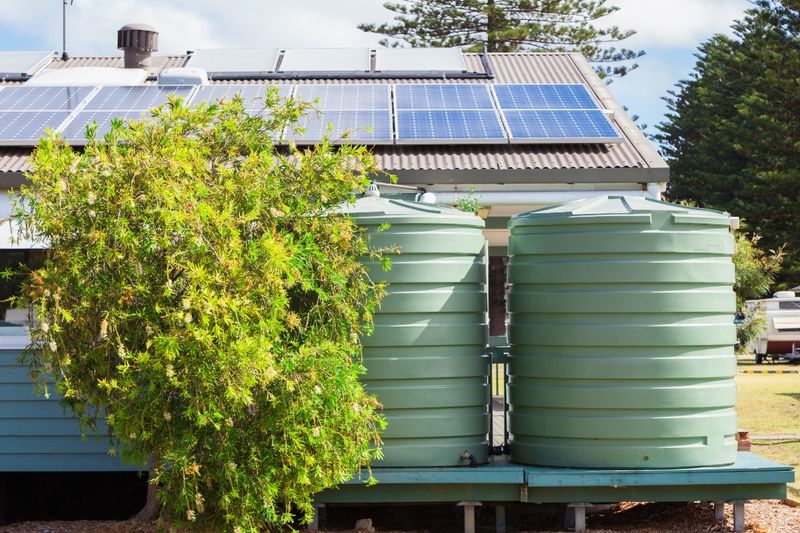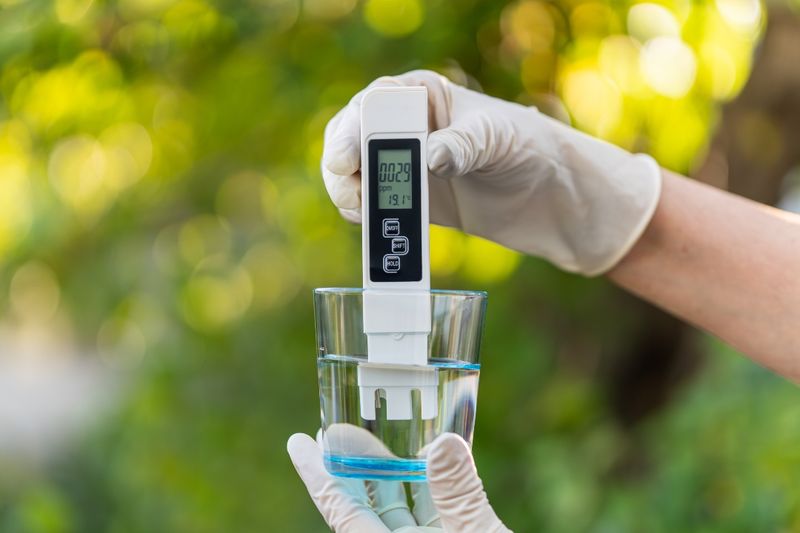Sustainable Water Strategies for Homesteaders
Every Drop Counts


Water is the lifeblood of any homestead, and managing your water wisely can mean the difference between abundance and scarcity.
For homeowners looking to make every drop count, three key strategies are at the heart of sustainable water management: harvesting rainwater, reusing greywater and maintaining a well for long-term stability. With the right systems in place, a steady and sustainable water supply is within your reach.
Harvesting the Sky
Rain is free, and harvesting it is one of the simplest ways to supplement your water supply. But if you don’t have a way to capture and store it, you’re letting a valuable resource slip away.
The first step is collecting rainwater efficiently. Metal or tile roofs are ideal because they shed water cleanly, while asphalt shingles can leach chemicals. Gutters with leaf guards help keep debris out of your system, and first-flush diverters prevent the dirtiest runoff from entering your storage tanks. However, you don’t have to get fancy. Steven Corcoran, CEO of Lawn Love shares that even a simple solution can reap big results.

“One of the best and easiest ways to collect rainwater is with rain chains,” he says. “You hang these from your gutter and then position a bucket or barrel underneath them, with the chain going in. As it rains, water will be guided downward by the chain and collected by the bucket. You can use that rainwater to water your lawn, water your plants and refill your water features.”
Storage is another critical factor. Food-grade barrels or cisterns with tight-fitting lids prevent contamination, mosquito breeding and algae growth. In colder climates, buried or insulated tanks prevent freezing. If you plan to use rainwater for household needs, you’ll also need a multi-stage filtration system.
“To keep stored rainwater clean and safe for use, it is important to maintain the tank and plumbing system,” shares Adam Bushell, director of AB Electrical & Communications. “Regular cleaning every few years is key to avoid algae buildup and contaminants. For added peace of mind, installing a UV or carbon filtration system can further ensure the water is safe for consumption.”
Solar-powered pumps can transfer water from tanks to homes without adding energy costs.
“These eco-friendly and cost-effective solutions are designed to reduce electricity usage while supporting sustainable water management practices,” Bushell adds.
Bennett Barrier, CEO of DFW Turf Solutions, reinforces the importance of investing in a quality water storage method.
“Without the right system, all that collected rainwater is wasted. Studies show that open rain barrels lose 35% of water in storage, and nearly half of do-it-yourself systems end up with bacteria and algae,” he said.
“The answer lies in burying storage tanks and using biochar filtration. Underground tanks are chilled, retarding bacterial growth and charcoal biofilters remain clean, no expensive treatment system required.”
While rainwater collection is an excellent way to reduce dependency on wells or municipal water, it’s important to check local regulations.
Greywater Gold
Not all used water has to go down the drain. Greywater — wastewater from sinks, showers and laundry — can be a valuable resource, especially in dry climates where every gallon counts. With proper management, greywater can keep lawns and gardens thriving and reduce strain on wells and septic systems. But, you have to do it correctly.
“The key practical reality with greywater is separating your sources properly,” cautions Evie Graham, senior editor at Waste Direct UK.
“Bathroom sink and shower water are generally fine for immediate garden use. Use washing machine water only if you’re using the right detergents and kitchen sink water is almost always problematic without proper filtration. Most systems fail because people combine all sources without understanding the chemical differences.”
Greywater is best suited for watering trees, shrubs and ornamental plants rather than edible greens or root vegetables, which can drink up bacteria in reused water. Either way, filtering out debris is a must for successful greywater use.
“The simplest hack is mulch basins,” Barrier shares. “Instead of expensive filtration, these trenches filter greywater naturally while watering trees and shrubs. Permaculture studies prove that this process conserves 50% of outdoor water use while improving soil health.”
Choosing the right soaps and detergents is another important consideration. Many conventional products contain salts, chlorine or phosphates that can harm plants and soil microbes. Opting for biodegradable, plant-friendly soaps keeps your greywater a beneficial resource.

In some areas, simple greywater systems are legal and encouraged. In others, more advanced treatment may be required, so research local codes.
Well, Well, Well
Your well may be out of sight, but it should never be out of mind. Instead, regular maintenance ensures a safe and steady water supply. Unlike municipal water, which is monitored for safety, private wells are the responsibility of the homeowner.
Routine checkups can prevent costly repairs. If water pressure drops, taps sputter or strange odors emerge, it could indicate pump issues, contamination or a dropping water table. Testing well water at least once a year can detect bacteria, nitrates and other contaminants before they become a health concern.
Jeremy Yamaguchi, CEO of Cabana recommends regularly testing well water for contaminants.
“Lawn and plant fertilizers or other chemicals can get in and cause the water to become unsafe. Additionally, use some kind of well cap or seal for sanitation purposes. It can also be wise to chlorinate the well.”
With that in mind, keep the area around the wellhead free from fertilizers and pesticides to reduce the chance of contamination.
Another important maintenance duty is checking water table levels.
“[Homeowners often] test their water quality but fail to record how deep their water level is,” cautions Barrier. “Studies show that taking measurements of well depth every two months can predict drought risk several months prior and allow homeowners to take precautions to avoid dry wells.”
Drought-proofing is another consideration, especially in areas with seasonal dry spells. Installing a storage tank to collect water during wetter months can help maintain a steady supply year-round. Mulching gardens, planting drought-resistant vegetation and reducing unnecessary water use all contribute to long-term well sustainability.
Water conservation isn’t just about reducing use — it’s about using resources wisely to build a resilient homestead. By collecting rainwater, reusing greywater and keeping wells in good shape, homesteaders can create a more sustainable water system that supports their land and families for generations.
Tags:Sustainable Acres

Acreage Life is part of the Catalyst Communications Network publication family.















